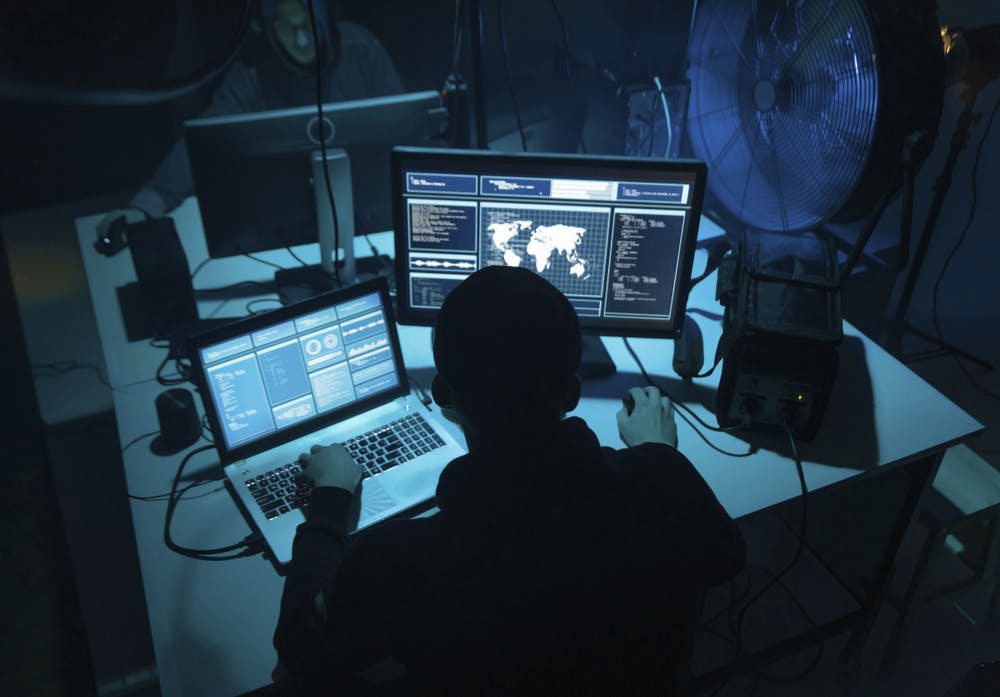Pentagon 5G Investments Poised to Improve Warfighter Decision-Making
FutureG & 5G initiative is hastening 5G adoption across DOD and investment in NextG technologies.

With FutureG & 5G testbed initiatives well underway, the Pentagon will focus on gathering quality warfighting data for better decision-making, building software-defined radios and pushing for enhanced security across different domains in 2023.
The Pentagon’s joint FutureG & 5G Office works on three key areas to further push modernization efforts. The accelerate portion of the initiative focuses on advancing the Defense Department’s adoption of 5G, the operate through part concentrates on ensuring the secure use of 5G, and the “innovate” area of the initiative works on investing in NextG technologies.
“We got a lot of those testbeds up and running. And that’s really critical because now we are actually able to get … quality, warfighting-informed data, to help us make better decisions about how we want to use this, how we want to invest in this,” Dr. Tom Rondeau, principal director for FutureG & 5G at the Pentagon’s Office of the Undersecretary of Defense for Research and Engineering, told GovCIO Media & Research. “This year, what you’re going to see is more of that kind of analysis of the applications that we want to run on those testbeds.”
DOD invested $600 million in 5G development at nine military test sites around the continental U.S. with the support of Congress since 2020. Two of the test sites, Naval Base San Diego in California and Marine Corps Logistics Base Albany in Georgia, have been working on 5G-enabled smart warehouses.
The Joint Base Lewis-McChord in Washington state has been testing the use of 5G connectivity for applications to improve ground combat training with augmented reality (AR) and virtual reality (VR). The Nellis Air Force Base in Nevada uses 5G to “disaggregate and disperse” for survivable command and control (C2), and the Hill Air Force Base in Utah is working on expanding spectrum availability for commercial applications through radio spectrum-sharing technology.
“The technology has really matured to a point where it’s … almost imperative for DOD to work with this and to understand how we can interact with what we call the ‘global information infrastructure.’ This is the worldwide connectivity of everything. How do we not participate and how do we not utilize what’s been produced out there in the commercial world?” Rondeau said.
Security remains one of the top priorities for Rondeau in 2023. The security of the emissions, the signatures they create, and the networking traffic are critical to understanding what is being created on the network, how they appear and look on the network, and ensuring they provide sufficient security to service members on the ground.
To promote technology development, the department is looking at open-source reference models to support open architectures. Rondeau believes open-source software is critical to better secure systems and accelerate innovation.
“Open-source software is not really a question anymore of whether it’s good or bad, useful or not useful. It’s a business decision about what you put into the open-source world or what you pull from, and what is the differentiating service that you’re providing on top of that open-source software that makes you money,” Rondeau said.
Last year, DOD CIO John Sherman released a software development and open-source software memorandum, where he directed the department to increase the use of open-source software and commercial off-the-shelf tools when possible. Sherman listed two concerns specific to open source: the loss of intellectual property (IP) and cybersecurity.
Ensuring System Resiliency with DevSecOps
To ensure system resiliency and cybersecurity is as robust as possible, Rondeau looks to the open-source model and a DevSecOps approach to software development, which embeds security into the development process.
“We’ve kind of identified that it’s impossible to 100% secure your system … It’s called the halting problem. You take that as the thesis behind all computer science, then yes, there’s no chance that you’re ever going to find all possible bugs,” Rondeau said. “So you have to be constantly on the lookout for them, constantly testing and driving them through the mechanisms to do quality assurance, and you have to be prepared to respond rapidly when those bugs are found and exploited in the wild. Those all go together, and the open-source model and the DevSecOps approach is all part of that solution.”
To measure how resilient the systems are and evaluate their success, the department benefits from commercial industry and pulls from their work using key performance indicators (KPIs) to measure success. Those KPIs include reliability, excellent accessibility and availability of the networks.
When information goes from various sensors in the field to the decision-maker, Rondeau said they use KPIs to ensure they have availability, uptime and constant access across systems.
To have a resilient system requires multiple approaches.
“Part of that solution is not just relying on 5G or 6G … Some of that’s going to be part of this global information infrastructure that the commercial world has deployed for us,” he said.
Some solutions will include deploying private 5G and FutureG networks, while many solutions will still depend on the traditional ways information is moved securely around the battlefield.
“We spend a lot of time to enable capabilities on the communications front because of specific threats that we have to deal with as a DOD that the commercial world doesn’t have to deal with. So when it makes sense when we’re in those types of environments, we want to have utilization of those different types of systems at our fingertips when we need them for the purposes that they were designed for,” Rondeau said. “And now you have multiple possible paths and multiple possible approaches to getting that information from the sensor to the decision-maker to the shooters. And that then, so a lot of engineering reliability is in redundancy.”
This is a carousel with manually rotating slides. Use Next and Previous buttons to navigate or jump to a slide with the slide dots
-

AWS Summit: Forging Successful Cloud Modernization Partnerships
Industry leaders share insights on the critical role industry partnerships have in enabling government agencies to navigate procurement challenges for cloud and zero trust solutions.
24m watch Partner Content -

CISA's CVE Program and Why it Matters for Zero Trust
The vulnerability program provides the cybersecurity community visibility into software as part of a key pillar of CISA's zero trust model.
5m read -

Air Force, Coast Guard Talk Data Security Efforts for AI Development
The services' AI initiatives include efforts like creating clean training data, countering data poisoning and bridging siloed teams.
4m read -

Software Factories Accelerate Federal Modernization Outcomes
IT leaders from Nutanix and SAIC explain how software factories streamline tech development, modernize legacy systems and accelerate adoption of emerging technologies like AI.
20m watch








